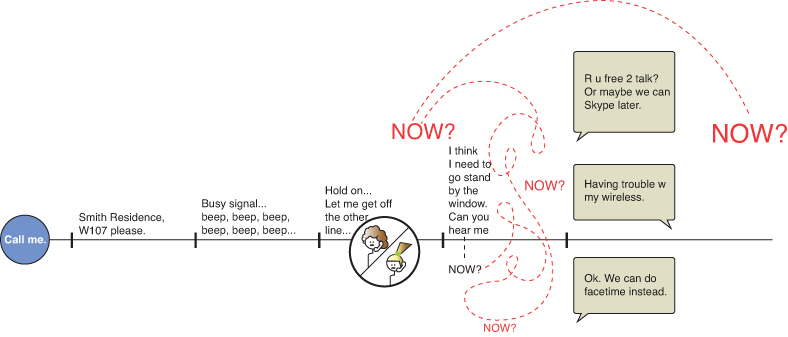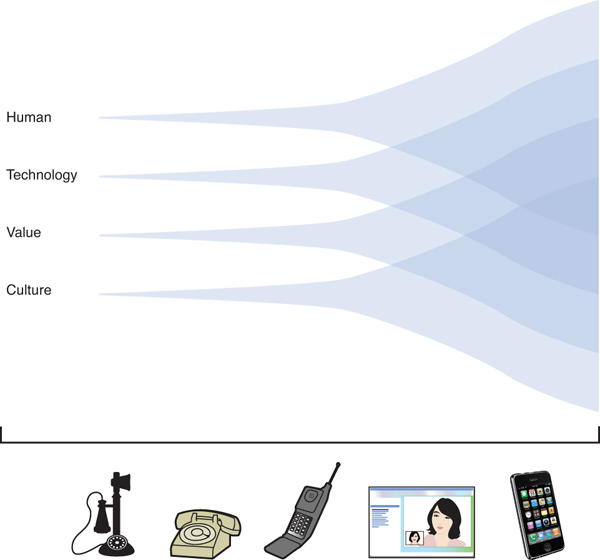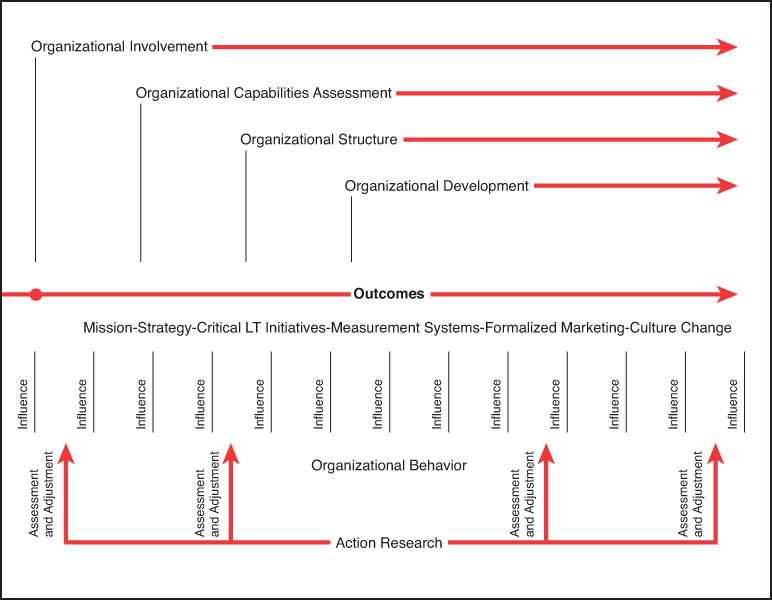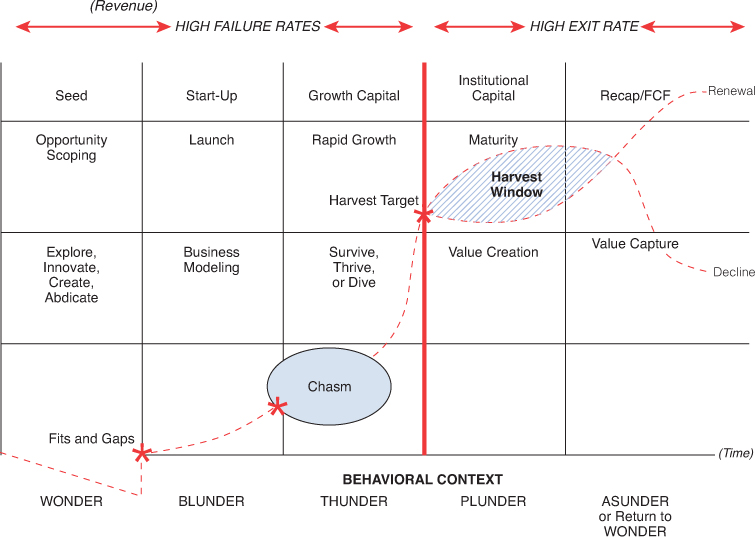1. What You Will Learn from This Book

Stephen Spinelli, Jr., Ph.D., current President of Philadelphia University, led the University’s strategic transformation. The University’s capital campaign included a $20 million single gift to endow the Maurice Kanbar College of Design, Engineering and Commerce. Dr. Spinelli previously held several leadership positions at Babson College and serves on a number of boards and in leadership roles for community, business, and professional associations. Dr. Spinelli received his Ph.D. in Economics from The Management School, Imperial College (London), his M.B.A. from Babson College, and his B.A. in Economics from McDaniel College. He began his professional life as a co-founder of Jiffy Lube.
Context
With insights from founding Jiffy Lube and through my 14 years of teaching experience at Babson College, I co-authored nine editions of the entrepreneurial guidebook New Venture Creation, which focuses on shaping opportunity, market entry, managing risk, enterprise growth, and harvest. In the past six years as President of Philadelphia University, I have been exposed to a broader set of disciplines, notably the design fields, which has dramatically shaped my thinking about the front end of the entrepreneurial process: opportunity recognition and opportunity development. Entrepreneurship and innovation have historically been taught through the lens of business education. From my experiences with this broader set of disciplines, notably design, engineering, and the social sciences such as ethnography, I have discovered that interdisciplinary collaboration, rooted in design thinking, yields superior opportunity recognition and opportunity development, thereby making for better ideas in the front end of the entrepreneurial funnel. At Philadelphia University, we were so convinced that this interdisciplinary or transdisciplinary perspective is the key to generating superior innovation that we reorganized the University from six traditional schools to three integrated colleges, with one of the colleges focused exclusively on formalizing a pedagogy that teaches disruptive innovation. The Maurice Kanbar College of Design, Engineering and Commerce (DEC) is named for the serial entrepreneur, tireless innovator, and PhilaU alumni Maurice Kanbar, who, among many accomplishments, both founded Skyy Vodka and invented the multiplex movie theater. In creating DEC, we assembled a broad international network of thought leaders in innovation, design thinking, disruption, and education. Part of this team assembled again here to create this book as a guide to disruptive innovation and teamwork. A companion guide to New Venture Creation, Disrupt Together refines the art and science of being innovative.
A Note on Integrated Teamwork: Cross-Disciplinary, Multidisciplinary, Interdisciplinary, and Transdisciplinary
Throughout the book, you will see the four terms used at times interchangeably because our authors each prefer a different term for various types of integrated teamwork. As a basic overview, we offer this explanation: Cross-disciplinary and multidisciplinary are both additive (2+5=7) and imply both a dependency across functions for performance and a cumulative impact from integration. Interdisciplinary and transdisciplinary both refer to the fuller integration of functions and as such are multiplicative (2×5=10), offering a transformative impact. In both interdisciplinary and transdisciplinary endeavors the whole becomes much more than the sum of its parts. This book offers examples, tools, frameworks, and tactics for all cross-disciplinary/multidisciplinary and interdisciplinary/transdisciplinary endeavors.
Inspirations for This Book
“Creative destruction”1 is a concept of new and better replacing old and tired. The long-term benefits to this birth-and-death entrepreneurial process are substantial. But it is not a linear positive trend, and the pace of change appears to be causing heightened tumult. New behaviors clash with societal norms or political constructs. Economic cycles, notably the 2008 recession and the years of continued economic malaise that followed, punctuate the high-risk environment that might be the new normal. Therefore, we believe innovation becomes a required core competency for survival, let alone gain! Teams provide the breadth of perspectives, knowledge, and skills that is virtually impossible for the individual to achieve. Most important, the process of incremental improvement that historically builds economic success for individuals, organizations, and economies before “the new norm” won’t win in today’s environment. That process occurs too slowly. We believe that pacing imposes a requirement for wholly new solutions. Let me state simply that you know you are being innovative when your solutions outperform the normative techniques as measured by the stakeholders. When your solutions change ways of behavior for entire cultures, you are leading a revolution.
Let’s look at the evolution of the “phone” as an example of the pace of change, as shown in Figure 1.1.
The evolution of human communication has been a shift from primarily face-to-face to a broad and deep array of intermediaries. The telephone remained basically the same for generations of users. Incremental advances like answering machines and call waiting made an impact for a few decades. Digital, mobile, and visual interfaces change communications every few years. All require more human time and technology investment and increasing costs. As our human involvement (we are our own tech support), cultural expectation (available 24/7), and technology complexity increase, so does our service provider engagement. Where we once had one phone in the home, and one phone company, we now have multiple devices, multiple accounts, and multiple cost layers. The blur among service provider, product, and technology requires a multidiscipline perspective.
This transformation blends and bends human interactions in terms of what’s expected of us for engagement, value expectations as we expand our cost of living from a single phone line for connection to a mobile phone, ubiquitous Internet access for videoconferencing, technological self-reliance as we become our own technology support, and cultural expectations as we are available 24/7, as depicted in Figure 1.2.
This is where design thinking helps us understand a phenomenon like human communications and presents stepwise (versus incremental) changes. Design thinking is inherently multidisciplinary because it does not adhere to strict theoretical constraints typical of many disciplines. Design thinking asks “what if” questions across disciplinary boundaries and therefore often plays best at the nexus of those boundaries. That is why design thinking is the underpinning of the learning nexus of design, engineering, and commerce. We are fond of asking, “Is your solution desirable, feasible, and valuable?”
A powerful consequence of design thinking and a rapidly changing environment is that the customer becomes an intimate partner in the creation of the solution. For many consumer product experts this has been the Holy Grail for a very long time. Today, with the breakneck pace of change and the ability to share information among large groups and diverse domains, the customer literally becomes the co-innovator.
As we expand the players in the process of innovation, we also increase the magnitude of the problems we can solve. I can’t stress enough that design thinking as a strategy spends as much time in the problem-finding domain as in the solutions domain. This time is spent iteratively, not sequentially: problem, solution, problem, solution. Stanford Associate Professor Pamela Hicks calls this “learn, return, and refine.” This makes the team expert in the dynamic environment they are working. The classic version 2.0 is a natural phenomenon instead of a tedious incremental next edition that tries to get the first one right.2
Design thinking as a sophisticated opportunity recognition process is a game changer.
We conceived this book with the simple proposition that humanity seeks improvement as a natural phenomenon. Education can and should support those instincts. Indeed, the world is filled with imperfections that demand action. Ask a random group of people whether the world is perfect and we predict 100% agreement that it is not.
Therefore, we believe that a basic objective of education is to stimulate the individual to solve problems. The “average” person is reasonably equipped to deal with problems when presented. However, education seldom prepares people to critically assess the current condition and add value.
The value-creating possibilities of a better process, one that innovates as core competency, will result in an improvement in the successful launch and growth of businesses and a sustainable improvement in the human condition.
The authors assembled for this book are inspired believers in the capacity of collaborators to find problems and map solutions when they are prepared with pathways and insights. Because I have spent my entire professional life in entrepreneurship—as an entrepreneur, teaching entrepreneurship and advising start-up companies, and as an entrepreneurial (I hope) university president—my thinking always starts with the question “Is there an opportunity?” Critically, I’ve always worried that the conception of opportunity was too often random. I cannot count the number of times someone has said to me, “I have a good idea,” and how infrequently it really was!
The book is organized into five sections and 16 chapters that begin with crafting the vision and strategic framing and move through to assessing your innovation capabilities and teaming issues to tools for innovation discovery and into shaping opportunity. The final section is a series of stories from the field that illustrate key aspects of disruptive innovation best told through example. Each section begins with an interview with one or more experts from the field that offer salient insights that frame the section’s chapters. In this chapter I will share my experiences that led to the reorganization of Philadelphia University and walk you through how this book can help guide your organization for better opportunity recognition and disruptive innovation through teamwork.
Section 1: Architecting the Vision
In the first section of the book, we walk you through crafting a vision and strategic planning.
In too many organizations strategic planning has become a routine process of validating the current vision and direction. Entrepreneurship teaches us to first focus on the nature of the opportunity and then marshal the resources and team appropriate to exploiting that opportunity. Design thinking insists on understanding the environment to allow for optimal crafting of an opportunity by involving many perspectives for leveraged decision making. Bringing together the opportunity focus of entrepreneurship and the problem finding and solving of design thinking is a powerful strategic planning method.
It is during the strategic planning process that the cultural acceptance of interdisciplinary decision making takes root. In this section we see how the foundation for innovation is an intentionally designed dynamic phenomenon.
Organizational change is aligned with the dynamic nature of innovation. That is, for innovation to become manifest and create value, people and processes must adapt their behavior to the needs of the output desired.
In the diagram of strategic planning (see Figure 1.3) for the innovation organization, we begin with organizational involvement to understand and shape the mission through assessing the fits and gaps in capabilities. Many organizations are not structured to accept change and therefore have to change structure to induce new and desired behaviors. That new structure allows for people and processes to develop, evolve, and implement new and different output.
The result of output is, not surprisingly, called outcomes. A well-defined strategic planning process adds discipline to innovative behavior. That’s why the Mission-Strategy-Critical Long-Term Initiatives are important. They set the metrics by which innovation can be measured. But, as you’ll discover in this book, the effect of these outcomes might very well change, or influence, organizational behavior. I recommend you monitor behavior with a rigorous assessment that we call “action research.” Often, myths and misunderstandings about mission and strategy are revealed in this process and can be addressed by leadership.
Section 2: Assessment: Opportunity Recognition and You
This section begins with assessing your innovation capability, which covers types of innovation and understanding the underlying motivations of your team members and cognitive barriers to and lubricants for creativity. This section also covers learning styles, team formation, and managing conflict for gain.
Teams are groups of people assembled to achieve something an organization deems important. Often teams are created to perform tasks or solve problems. Sometimes teams are formed because it seems easier than placing the entire burden on an individual. Teams can be temporary or semipermanent. When transdisciplinary teams are intentionally created, there is an implied disruption of normative disciplinary thinking. We suggest that explicitly transcending your field of knowledge to learn from and leverage colleague perspectives can be explosive. Managing that tension is the key to your success, as Sarah Singer-Nourie points out in Chapter 6, “Your Team Dynamics and the Dynamics of Your Team.”
Section 3: Opportunity Recognition: Discovery and Formulation
This section of the book covers the process of reading the landscape and anticipating key cultural shifts, employing design thinking for opportunity finding and development, and an overview of tools and techniques for discovery and probing customer development.
Opportunity is the nuclear center of the entrepreneurial process. It is motivated by innovation and is central to new venture creation. An idea can be a real opportunity if it improves the current solution by being a new, better, faster, or cheaper offering. As the creator of new ventures, a scholar, and a teacher of entrepreneurship, I have always been bothered by the Darwinian approach to opportunity recognition. “I have a good idea” tends to be the starting point of businesses. The idea often begins as a result of the aspiring entrepreneur having an experience that is less than fulfilling. The idea for improvement leads the entrepreneur to search for a business model that will launch, nurture, and sustain the idea. But success rates tend to be dismally small (as low as 9%) and failures personally devastating.3 This Darwinian process is effective for survivors but not optimal. With design thinking as a process for ideating, shaping, and creating opportunities, we can do better, especially in the opportunity-scoping phase, as shown in Figure 1.4, where failure rates are the highest. In Chapter 8, “Design Process and Opportunity Development,” Tod Corlett delves into application of design thinking as a key driver in better opportunity development.
In my entrepreneurship textbook I write about the “3M’s”—market demand, market size and structure, and margin analysis—as defining characteristics of an opportunity. In this book you will find a close association of thoughts and practices that bring sophisticated methods to the understanding of the 3M’s.
Design thinking is the integration of the teaming in a transdisciplinary approach to opportunity. It is a better way of developing and shaping ideas that create value. We can teach people to be intentionally observant to the surroundings and empathetic to the needs of a larger demographic. In Chapter 9, “Navigating Spaces—Tools for Discovery,” Natalie Nixon offers a deep inventory of tools and tactics for this type of probing for discovery. Honed observational and analytical skills enable the innovators to iteratively assess interactions and map the intent and result of the ecosystem being analyzed. By creating this map of understanding, you can observe whether the intended outcomes are achieved and begin to shape better solutions. Opportunity can emerge in a set of changes or in entirely new systems.
Why Design Thinking Is a Strategy for Creating Value
Increasing rates of technological change, rise in globalization, increasing economic pressures, and environmental concerns create shifting cultural norms, as Sarah Rottenberg points out in Chapter 7, “Leveraging Ethnography to Predict Shifting Cultural Norms.” These shifting norms are ripe for disruptive innovation, and design thinking is a unique approach to sense making in this ambiguity and chaos.
The twenty-first century has introduced rates of socioeconomic change that are new to the world. This exponentially increases the need for new and better solutions, which require different approaches. As people increasingly rely on Google and Wikipedia, their engagement creates a valuable digital exhaust.
“Until recently, big data made for interesting anecdotes, but now it has become a major source of new knowledge. Google is better than the Centers for Disease Control at identifying flu outbreaks. Google monitors billions of search terms (“best cough medicine,” for example) and adds location details to track outbreaks. When Walmart analyzed correlations using its customer data and weather, it found that before storms, people buy more flashlights but also more Pop-Tarts, even though marketers can’t establish a causal relationship between weather and toaster pastries. Wikipedia has been proven to be as accurate as, if not more accurate than, the previous standard, Encyclopédia Britannica.
Design thinking is a methodology that is uniquely qualified to navigate through the ambiguity brought by these shifting cultural norms to find new meaning and new opportunity.
Section 4: Value Creation: Opportunity Shaping
To effectively disrupt the status quo, a transdisciplinary team must have a vehicle to transport their idea to people, markets, and communities. This section covers the entrepreneurial process of shaping that framed opportunity into a sustainable business model and includes execution issues such as pivoting. Attention to shaping an opportunity and business model can have a dramatic effect on business survival rates.
Design Thinking and Entrepreneurship
Opportunity recognition is the nuclear core of the entrepreneurial process. As an entrepreneur and entrepreneurship educator for 35 years, I have been vexed by the randomness of the ideas that are seen as opportunities and ultimately the very few that create value. Part of the problem is the way we teach in general and the specific lack of attention to teaching opportunity recognition.
Colleges and universities are typically organized around disciplines like economics or art or history. Innovation crosses disciplinary boundaries, and therefore scarce few colleges and universities have established curricula that teach it. Domain boundaries do not support collaborative education. Although a significant effort for interdisciplinary education has been made in the establishment of entrepreneurship curriculum, the fact that they are primarily in business schools limits the boundaries that can be crossed. Also, colleges tend to teach entrepreneurship as an implementation process more than ideation. The effect is to spend far less time building opportunity recognition skills. Less well-developed ideas search for a business model, risking resources along the way.
We believe that the new paradigm for organizations is pervasive innovation, and it is an approach that can be taught (see Figure 1.5). The traditional perspectives remain an important skill set. But the new perspectives are required cultural competencies.
Section 5: Putting It into Practice: Stories from the Field
This section of the book offers some intriguing true stories about interdisciplinarity and disruptive innovation, from branding to designing products and services for women, to technology adoption in healthcare, to launching disruptive innovation business models from within established companies.
Examples from Philadelphia University
As a lifelong entrepreneur and entrepreneurial educator, I have seen my share of real-world projects, largely rooted in business. My role as president at Philadelphia University affords me a view across a broader set of disciplines, notably those working in interdisciplinary projects, that yields an interesting set of examples of the power of collaboration and disruptive innovation even at the student level.
Following are three recent examples of industry “problems” that were solved by transdisciplinary teams of students. Fortune 500 firms presented the assignments to students in the broadest form, and teams were given great latitude in their responses.
Armstrong: “Think vertically.”
Federal Mogul: “Make a mother’s life better.”
Define Beauty
DuPont dominated the kitchen countertop market for many years with their Corian product. As markets and tastes changed, instead of yielding to competitors they began to innovate, embracing design thinking and the educational system. In a one-week “Sprint” competition students conceived of and prototyped a dozen new uses of Corian. Through discussions with customers and DuPont executives, the teams believed they needed to connect to customers through an aesthetic lens before considering the practical. The teams consistently heard customers talk first about beauty before any other issue such as utility and cost. The teams constantly probed for the connection of beauty in the new products students were designing. The discourse continued with each product feature and characteristic. There were dozens of iterations during the week yet the pace didn’t seem frenzied. During the final presentation of the concept prototypes to a team of DuPont management, Philadelphia University faculty, and potential customers, the judging panelists asked as many questions about the process as they did about the final output. Several innovations went on to the next steps in commercialization.
Think Vertically
Armstrong World Industries, Inc.,4 is a global leader in the design and manufacture of floors and ceilings. In 2012, Armstrong’s consolidated net sales totaled approximately $2.6 billion. Based in Lancaster, Pennsylvania, Armstrong operates 32 plants in eight countries and has approximately 8,500 employees worldwide. Armstrong ceiling tiles are a ubiquitous presence in architecture, construction, and the built environment.
In this project students had six weeks to investigate spaces and people that could benefit from a vertical spacing interface. They had to conceive of an improvement of a space using a “vertical perspective,” create drawings, make a prototype, and estimate the potential market. Armstrong has been in the tile business in one fashion or another for more than 150 years. Virtually everyone in the U.S. has experienced the horizontal Armstrong ceiling. The mental model of an Armstrong tile is a drop ceiling. Breakthrough thinking could occur only if the old perceptions were abandoned.
Transdisciplinary student teams argued intensely about the potential for vertically improving space. Each argument seemed to break down another preconception. When the silos are removed, a new palate is formed. We found that when team members transcend their own disciplinary understandings, the team achieves breakthrough innovation. We found that statements or questions that imposed definitive strictures blocked creative solutions. “It must” as a beginning of a sentence typically meant the team member was imposing his or her disciplinary perspective on the solution. It is the death knell of new ideas.
In the Armstrong example our methodology of team interviews in a broad ethnographic perspective triggered innovation that transcended individual disciplines.
Make a Mother’s Life Better
Our third example required the students to “make a mother’s life better.” This was the most interesting challenge because of the historical perspective of the company presenting the project and the experience of the teams accepting it.
Federal-Mogul Corporation is an innovative and diversified $6.7 billion global supplier of quality products, brands, and creative solutions to manufacturers of automotive, light commercial, heavy-duty, and off-highway vehicles, as well as in power generation, aerospace, marine, rail, and industrial. That’s right. They are a supplier to industry. Their brief was a message to us—and to themselves—that innovation was a cultural requirement that stretched their organization beyond their traditional markets and focused on the needs of customers. The leadership of the company was impressing on both students and management that Federal-Mogul’s culture of innovation has to be constantly renewed. None of our students was a parent. The issues presented by motherhood are so vast and complex that I thought, “They’ll never get this one right.”
I was wrong.
The students met with young and old mothers, single and married mothers, poor mothers and rich mothers. They went to cities and suburbs, racially diverse neighborhoods, and ethnically rigid communities. A disciplined approach to “talking with customers” is integral to the design process and becomes a distinct competitive advantage in creating valuable innovation. The students proudly delivered their answer. The clear and unequivocal problem was...a lack of sleep.
Federal-Mogul has deep expertise in materials science and an intimate understanding of lightweight materials. The team conceived of a wall that was thin and lightweight but virtually soundproof. Noise external to the baby’s room would be greatly muffled. Because the wall was thin and lightweight, a fiber-optic wire was easily threaded through the wall for a video and audio monitor inside the baby’s room. The baby would sleep better and the mother would sleep better. The solution is patent pending.
How were teams of undergraduate students able to define the opportunities, map solutions, and recommend a pathway to success?
The Disruptive Innovation Approach
We believe that the answer is simple but not easy to implement or master.
Interdisciplinary teams trained as design thinkers to look for problems and iteratively map solutions innovate more efficiently, effectively, and consistently than any individual or organizational construct. The effect is a higher probability of success in the context of a new or improved product or service in an existing organization or a newly created one. In essence, this process is designed to elevate the probabilities of success through improved opportunity recognition. The vehicles for taking that opportunity to the marketplace are not constrained to new or existing ventures. Both forms will have higher rates of success.
In this book, we offer insights into collaboration, teamwork, and disruptive innovation, including navigating ambiguity, applying design process, leveraging learning styles in innovation, managing creative conflict for gain, the process of discovery, opportunity shaping, business model formation, and execution—including execution tools such as the pivot. We offer a series of case studies from branding to healthcare to illustrate our viewpoints in action.
Endnotes
1. Joseph Schumpeter, Capitalism, Socialism, and Democracy (1942).
2. Thanks to former Governor Craig Benson of New Hampshire and co-founder of Cabletron for this thinking.
3. http://sbaer.uca.edu/research/asbe/2004/PDFS/23.pdf.
4. Armstrong markets the most extensive portfolio of residential and commercial floor products available—hardwood, laminate, linoleum, vinyl sheet and tile, ceramic, and BioBased Tile—under the brand names Armstrong, Bruce, and Robbins. The company’s global acoustical ceiling and suspension systems business is 90% commercial—offices, healthcare, education, retail, transportation, and other segments—and 10% residential.





